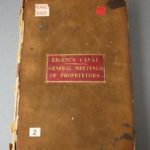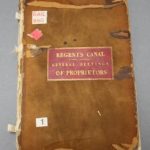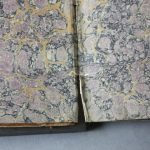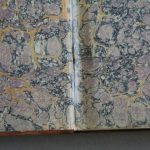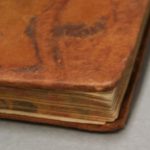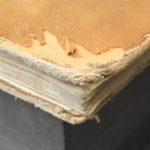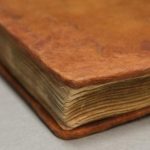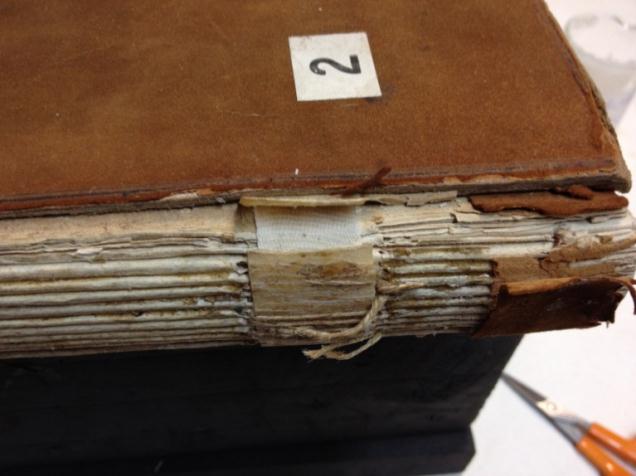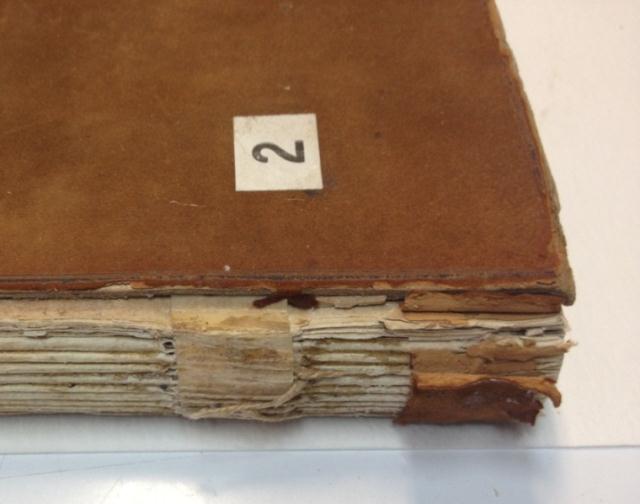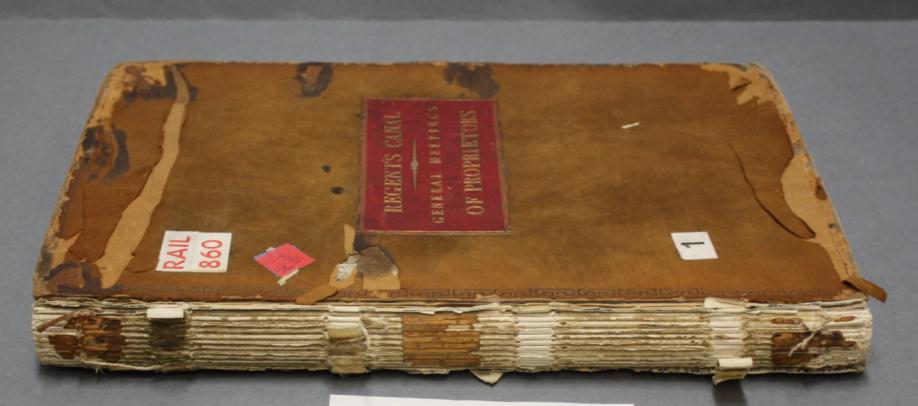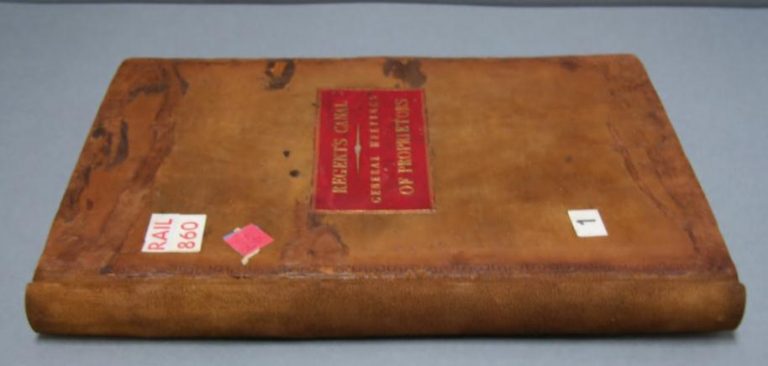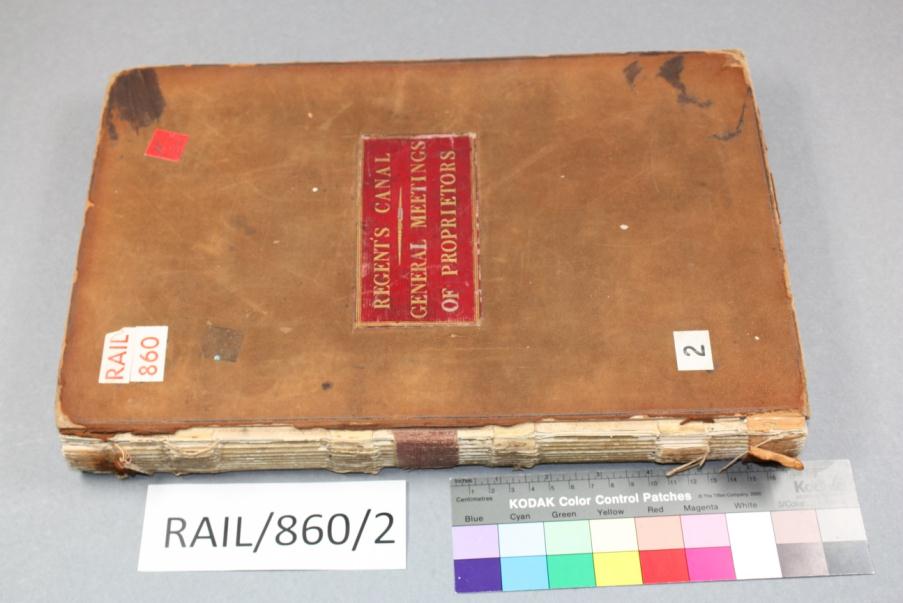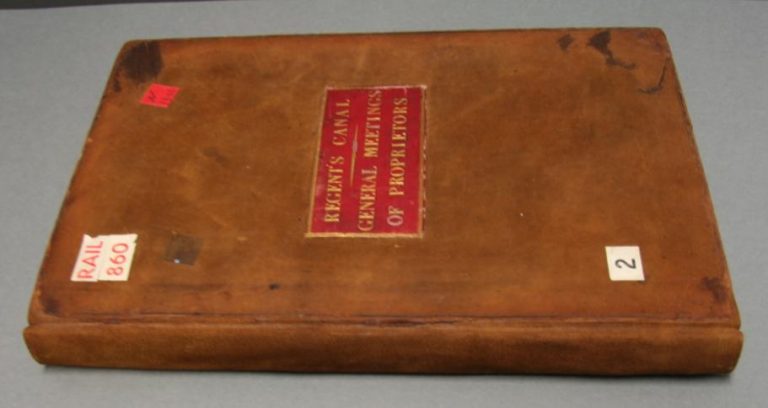2012 marked the bicentenary of construction starting on London’s famous Regent’s Canal. The Regent’s Canal passes just north of central London and connects the Paddington basin in the west, to the Limehouse basin in east London. This would allow for goods to be easily transported from the north of London to the docks at Limehouse without needing to put it on to carts and transport it through central London. Construction on the canal began in October 1812 after an Act of Parliament and was opened to the public in August 1820. The work on the project was managed by the Regent’s Canal Company who employed John Nash to oversee the design and creation of the canal.
The National Archives conserved two company minute books in its collection as part of the celebrations, and the conservation work was funded on behalf of the Regent Canal historical society.
- Rail 860/2 front board before treatment
- Rail 860/1 front board before treatment
The first two volumes in the series received treatment. Both volumes were missing their spine leather. This had caused some of the sewing and sewing supports to break on the spine and pages, as a result, had come loose. This made the pages at risk of becoming lost or damaged. Three of the four boards, which form the main part of the covers protecting the pages at the front and back of the book, had become detached from the book block. This made them difficult to handle and also put the pages at risk of further damage. The corners of the boards had been knocked and worn away through years of use.
Treatment
Any damaged pages were repaired and loose pages were reattached to the volume.
- RAIL 860/1, detail of endpaper repair, before treatment
- RAIL 860/1, detail of endpaper repair, after treatment
The corners of the boards, which form part of the cover, were re-built and covered with a repair paper.
- Rail 860 – board corner before treatment
- Rail 860 – board corner after treatment
- Rail 860 – board corner before treatment
- Rail 860 – board corner after treatment
Any structural damage was repaired and the sewing was reinforced to strengthen the binding.
A new spine piece was cut from calfskin, which was then toned to match the original leather using leather dyes. This leather was then used to create a new spine piece which would protect the structure of the book from damage as well as supporting the pages when the book is opened.
As a result of this treatment, these bindings have now been stabilised and protected from any further damage. They are now fully orderable in the reading rooms at Kew and an important part of the canal’s history is preserved for future generations.
